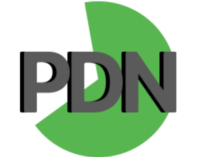Retirement Planning for Self-Employed Professionals
Advertising
Retirement planning can feel overwhelming for self-employed individuals, but with the right tools and strategies, it’s entirely achievable.
Without access to employer-sponsored plans, self-employed professionals can take advantage of flexible and tax-advantaged accounts to secure their financial future.

Explore Retirement Account Options
Self-employed professionals have several excellent retirement savings options. A SEP IRA (Simplified Employee Pension) is a great choice, allowing contributions of up to 25% of your income or $66,000 annually, whichever is less. If you’re looking for higher contribution limits and the ability to contribute as both an employer and employee, a Solo 401(k) might be ideal. Alternatively, a Roth IRA offers tax-free withdrawals in retirement, making it a smart choice for those expecting higher taxes in the future.
Set Clear Retirement Goals
Without a traditional employer plan, it’s essential to set clear and realistic retirement goals. Begin by estimating how much you’ll need to cover expenses in retirement and determine how much to save each month to reach that target. Use online calculators to evaluate different scenarios based on your income and desired retirement lifestyle.
Maximize Contributions and Catch-Up Opportunities
Take full advantage of the contribution limits for your chosen retirement accounts. If you’re over 50, catch-up contributions allow you to save even more, helping you make significant progress toward your goals. These options can be particularly beneficial for professionals who started saving later in their careers.
Maintain Consistency
The key to successful retirement planning is consistency. Even during slow months, prioritize your savings to keep your plan on track. Setting up automatic contributions can simplify the process and ensure you stay committed to your goals.
By leveraging accounts like SEP IRA, Solo 401(k), and Roth IRA, self-employed professionals can take charge of their retirement planning and build a financially secure future.
See also: Investing in Dividend Stocks: A Passive Income Guide




